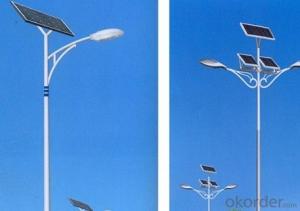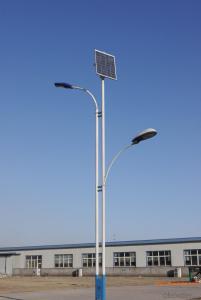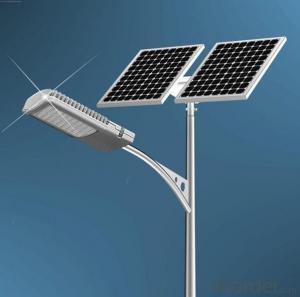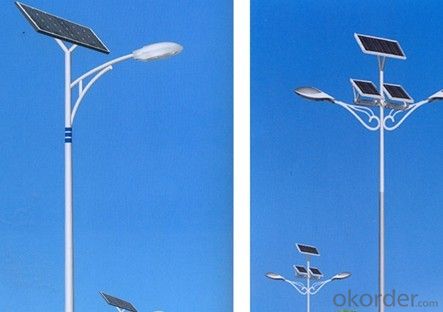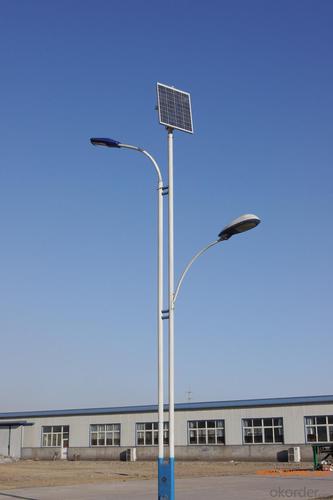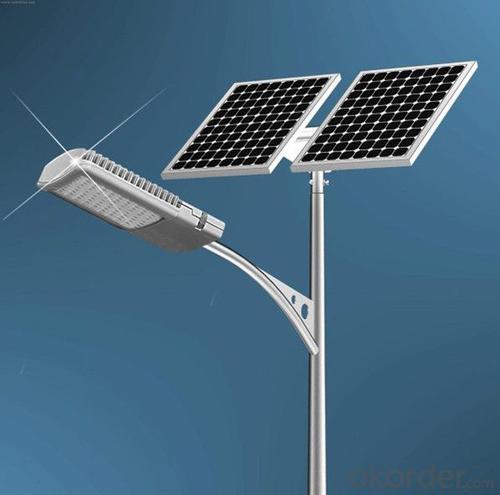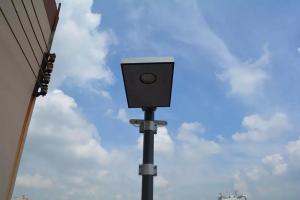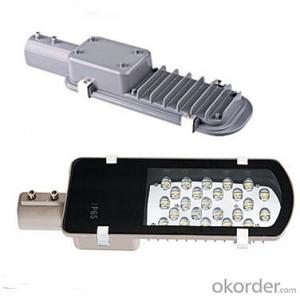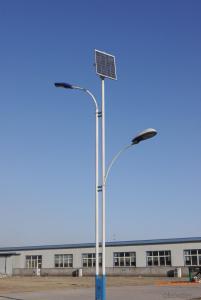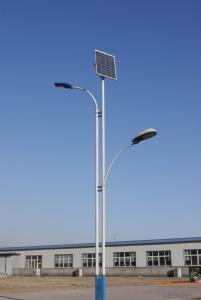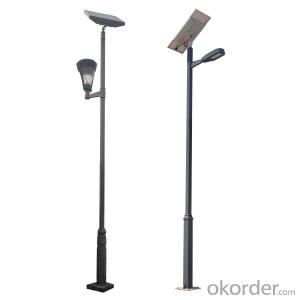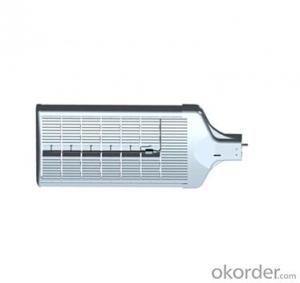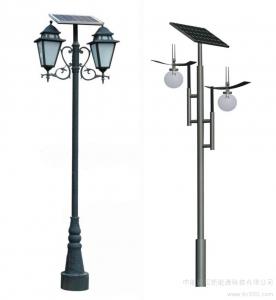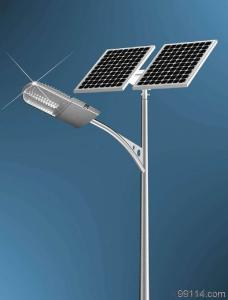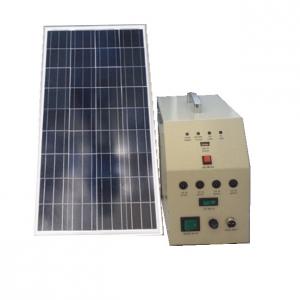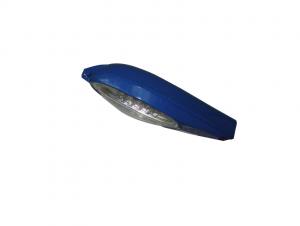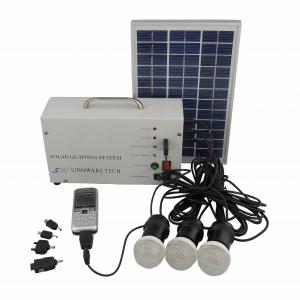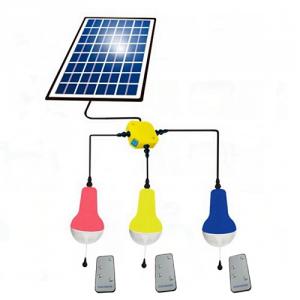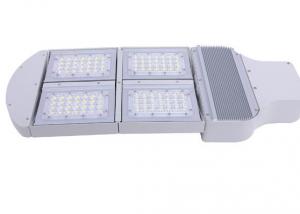Outdoor Motion Solar Light - Solar Street Light Environmental Friendly, Cost Saving, Top Class Quality 80R
- Loading Port:
- Ningbo
- Payment Terms:
- TT OR LC
- Min Order Qty:
- 1 set
- Supply Capability:
- 5000 set/month
OKorder Service Pledge
OKorder Financial Service
You Might Also Like
Step 1 – Find area in need of street lights
The first thing to figure out is the length of road in need of street lights. This can be a small entrance road only a couple hundred of feet long to miles of streets through an area. Does the area currently have any type of lighting available? What is the reason for needing street lights in this area?
Step 2 – Find out if electric is available
Is the electrical grid already nearby or would you need to call in the power company to bring in electrical lines? If the electric needs to be brought to the area, how much is this going to cost? Depending on how far the grid electric is from the location of the needed lighting, this can be quite expensive.
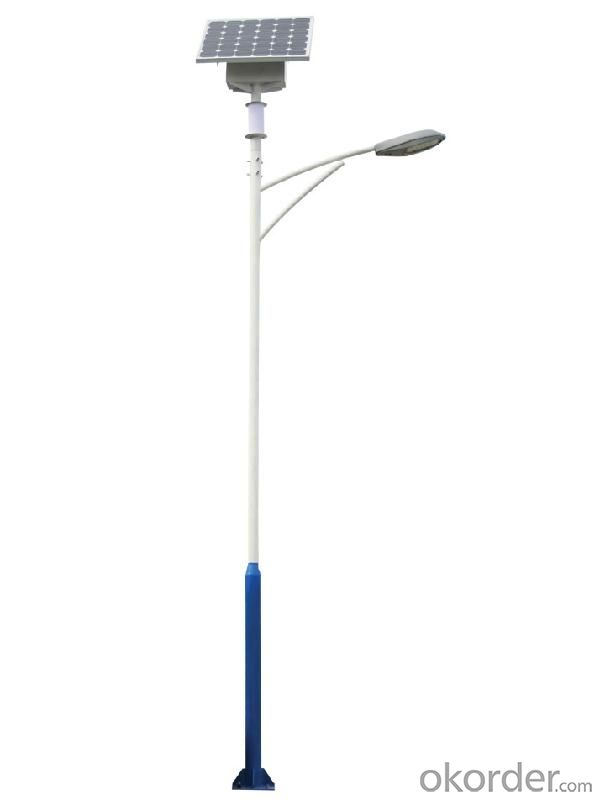
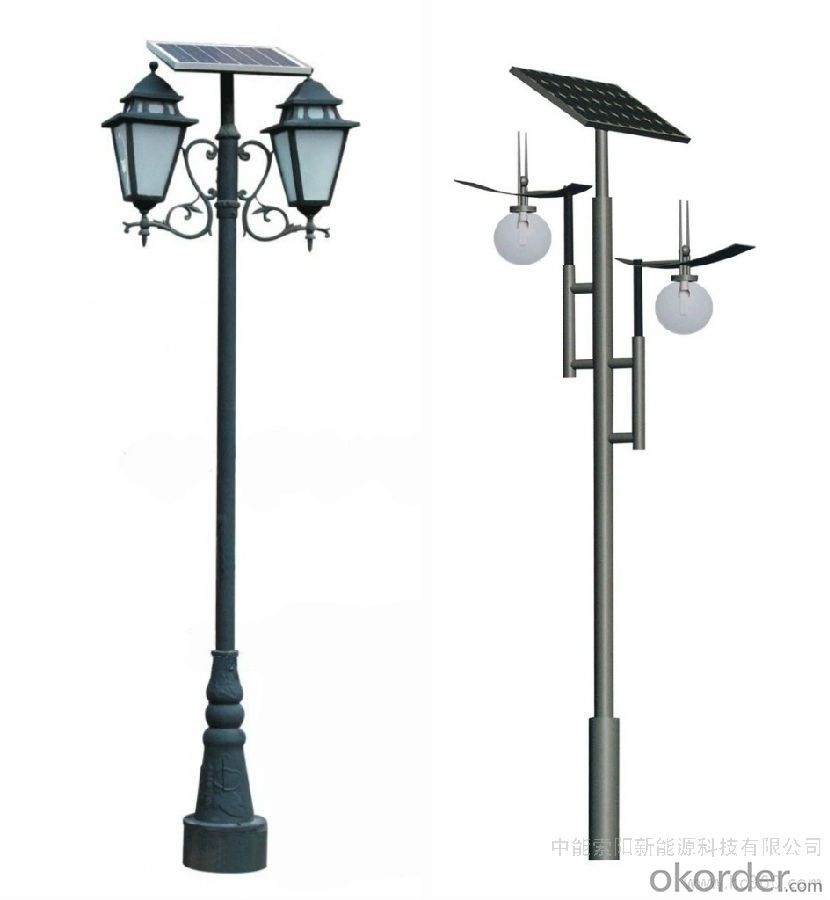
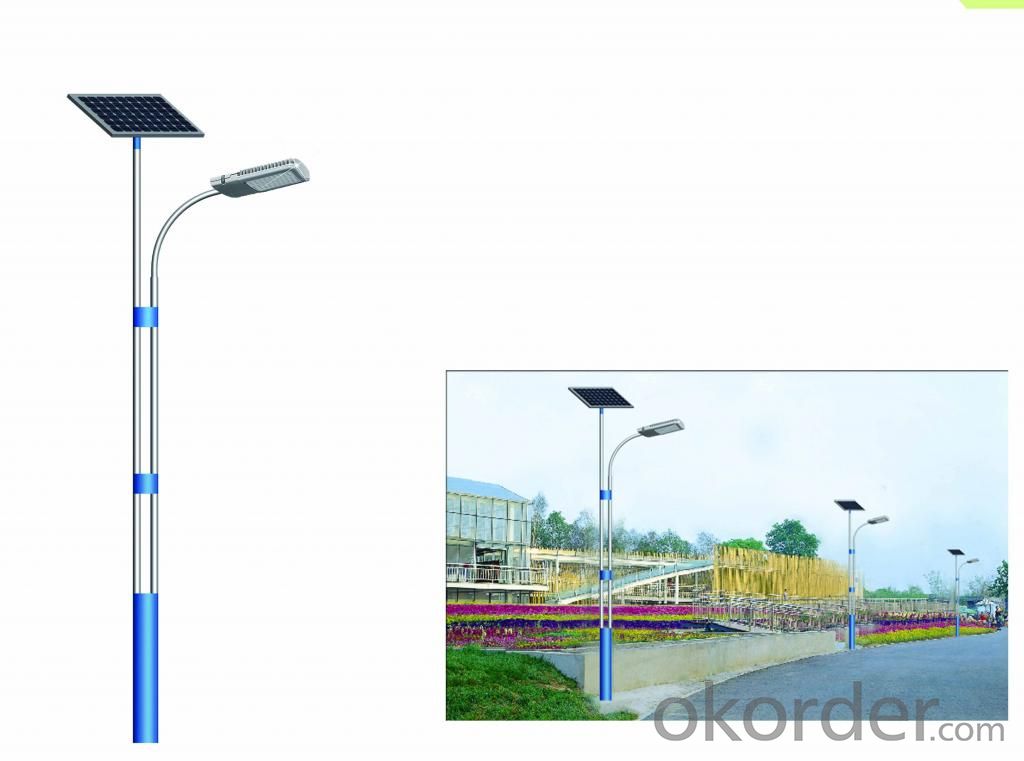
Step 3 – Determine the lighting requirements
How much lighting is needed on the street? Do the lights need to be dark sky compliant? Do the street lights need to run from dusk to dawn or for only a specified number of hours at night? Are the street lights able to dim in the middle of the night and still provide enough lighting? These questions need to be answered before you can decide on how many lights you will need to complete the project.
Step 4 – Find all alternatives
Solar power street lights are an option to traditional electrical lights. Solar street lights do not need the electrical grid to be brought in as they are self-contained units that provide their own electric.The best lighting solution by using lower amounts of power, better optics, dimming features where needed, and cost less in an overall solution.
Step 5 – Contact companies for quotes
The last step after gathering the above information is to contact companies for quotes. Just like with anything else, get multiple quotes and weigh the pros and cons of every company and situation. The lowest quote is not always the best, so make sure to do your research on companies and products before you submit a purchase order.
If you take your time, do your research, and gather needed requirements, your next street lighting project will be a success. Never be afraid to ask a lot questions, they may save you time and money in the long run.
- Q: How do you ensure proper maintenance of solar light batteries?
- To ensure proper maintenance of solar light batteries, it is essential to regularly clean the solar panels using a soft cloth and mild detergent, as dust and dirt can reduce their efficiency. Additionally, it is advisable to check the battery connections and terminals for any corrosion or loose connections and clean them if necessary. It is important to place the solar lights in areas where they receive maximum sunlight exposure, as this helps in optimizing battery charging. Finally, if the solar lights are not in use for an extended period, it is recommended to remove the batteries and store them in a cool, dry place to prolong their lifespan.
- Q: Are solar lights suitable for outdoor basketball courts?
- Yes, solar lights are suitable for outdoor basketball courts. They provide a cost-effective and environmentally friendly lighting solution for outdoor spaces, including basketball courts. Solar lights are easy to install and require minimal maintenance, making them a practical choice for illuminating outdoor areas, even during nighttime games.
- Q: Do solar lights require special batteries?
- No, solar lights do not require special batteries. They typically use rechargeable AA or AAA batteries that can be replaced easily.
- Q: Are there any noise concerns with solar lights?
- Solar lights do not pose any noise concerns because they are powered by sunlight, eliminating the need for moving parts or electricity. In contrast to conventional lights that can generate noise from mechanical elements or electrical currents, solar lights operate silently. As a result, they are an excellent option for residential areas or locations that prioritize tranquility. Moreover, their lack of noise also enhances their durability and reduces the need for frequent upkeep.
- Q: Do solar lights have adjustable color-changing options?
- Yes, solar lights do have adjustable color-changing options. Many solar lights are designed with built-in color-changing LEDs that allow you to change the light's color to suit your preference or create a specific ambiance. These lights typically come with a remote control or a button on the light itself that allows you to cycle through different colors or choose a specific color. This adjustable feature is especially popular in decorative solar lights used for outdoor lighting purposes, such as pathway lights, garden lights, or string lights. Additionally, some solar lights also offer the option to set the lights to a single color or have them transition smoothly between different colors, providing even more versatility in terms of lighting options.
- Q: Can solar lights be used for road safety or traffic control?
- Yes, solar lights can be used effectively for road safety and traffic control purposes. Solar-powered lights are a reliable and cost-effective solution for illuminating roadways, crosswalks, and intersections. They can enhance visibility, particularly in areas where traditional electricity sources are not easily accessible or too expensive to install. Solar lights can help improve road safety by providing clear and visible signage, traffic signals, and delineation of lanes, thereby reducing accidents and promoting smoother traffic flow.
- Q: Can solar lights be used for outdoor parties or events?
- Yes, solar lights can be used for outdoor parties or events. They are a great eco-friendly option as they harness energy from the sun to power the lights, eliminating the need for electricity or batteries. Solar lights come in various designs and can provide a charming and ambient atmosphere for any outdoor gathering.
- Q: Are solar lights suitable for coastal regions?
- Yes, solar lights are suitable for coastal regions. They are designed to withstand various weather conditions, including salty air and high humidity, which are common in coastal areas. Additionally, solar lights do not require an external power source, making them ideal for remote locations like beaches or coastal paths.
- Q: How do I extend the lifespan of my solar lights?
- There are several measures you can take to extend the lifespan of your solar lights. Here are some recommendations: 1. Optimal placement: Ensure that your solar lights are positioned in an area that receives maximum sunlight exposure throughout the day. This will enable the solar panels to charge efficiently and provide longer illumination during the night. 2. Regular cleaning: Keep the solar panels clean and free from dirt, dust, and debris. It is important to regularly wipe them with a damp cloth to maintain optimal performance. Dirty panels can impede the charging process and reduce the lifespan of the lights. 3. Battery upkeep: Most solar lights are equipped with rechargeable batteries that store energy during the day for nighttime use. To extend their lifespan, it is crucial to regularly check and replace old batteries. If the lights are not performing well or the brightness is diminishing, it may be time for a battery change. 4. Winter care: During the winter months, solar lights often receive less sunlight and experience reduced performance. To prevent damage, consider storing them indoors or in a cool, dry place when not in use. If this is not possible, make sure the solar panels are not covered with snow or ice, as it can hinder the charging process. 5. Energy-saving options: Some solar lights offer energy-saving features, such as dimming options or motion sensors. Utilizing these features can help conserve energy and prolong the lifespan of the lights. 6. High-quality products: Invest in solar lights from reputable brands that offer high quality. Although they may be slightly more expensive initially, they often come with superior components and materials that can significantly increase the lifespan of the lights. 7. Regular maintenance: Periodically inspect the wires, connections, and light fixtures for any damage or signs of wear and tear. Promptly replace any faulty parts to prevent further issues and ensure the longevity of your solar lights. By following these suggestions, you can extend the lifespan of your solar lights and enjoy their benefits for a longer duration.
- Q: Do solar lights have a motion sensor option?
- Yes, solar lights are available with a motion sensor option.
Send your message to us
Outdoor Motion Solar Light - Solar Street Light Environmental Friendly, Cost Saving, Top Class Quality 80R
- Loading Port:
- Ningbo
- Payment Terms:
- TT OR LC
- Min Order Qty:
- 1 set
- Supply Capability:
- 5000 set/month
OKorder Service Pledge
OKorder Financial Service
Similar products
Hot products
Hot Searches
Related keywords
